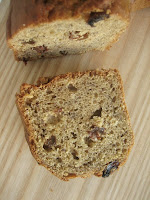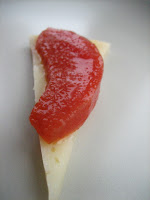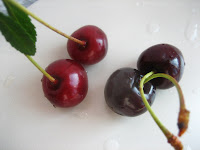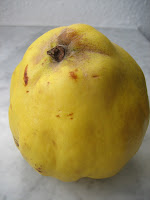 Kaiserschmarrn is a traditional Austrian dessert...and a perfect Sunday breakfast if you ask me. It is made of a fluffy pancake that is split with fork into small pieces and it is served with apple or plum sauce.
Kaiserschmarrn is a traditional Austrian dessert...and a perfect Sunday breakfast if you ask me. It is made of a fluffy pancake that is split with fork into small pieces and it is served with apple or plum sauce.
Every Bavarian restaurant has Kaiserschmarrn on their menu and they can be very different in taste and texture. Some are light, some are dense, some are egg-y, some are not, some are caramelized, some have strong rum taste, many have raisins or sliced almonds, other not...plenty of variety out there.
I started with a recipe from Austrian/German chef Sarah Wiener and couple of Kaiserschmarrns later I found ingredient combination that makes my perfect Sunday breakfast.
Kaiserschmarrn
adapted from Sarah Wiener
serves 2
2 tbsp raisins
1 tbsp rum
3 small eggs2 tbsp sugar
half a vanilla bean
6 tbsp milk
1 dl + 3 tbsp flour ( I use white spelt flour)6 tbsp milk
2 tbsp sliced almond
20 gr clarified butter ( I sometimes use coconut oil)plum or apple sauce (room temperature, not cold from the fridge)
1 tbsp powder sugar + 1/4 tsp cinnamon
In a small bowl put the raisins add rum and let sit for about 30 minutes. Or if you do not have time, heat the rum until warm add the raisin, take off the heat and by the time you make the dough raisins will be nice and soft.
Separate the eggs, beat egg yolks with sugar and the vanilla seeds until the eggs are thick and light yellow in colour. Add the flour, whisk, add slowly the milk, whisking all the time to avoid the lumps.
Heat a cast iron pan (22 cm) on low heat and let the butter melt. In a separate bowl beat the egg whites until stiff. Add first a third to the egg yolk mixture, carefully fold in. Add the rest of the egg whites. Pour the mixture into the heated pan. Let it cook on low heat for about 10 minutes. Then sprinkle the raisins and almonds (or fresh fruits) over the pancake.

Now you need to turn around the pancake. The easiest way to do this is to put it in the oven until the top is set and gets colour, 10-15 minutes on 180C.
Or if you are brave enough (and do not mind the mess), take a biggest spatula you have, run it under the pancake and turn around. This method can be very messy but it does work. And to do not worry if the pancake breaks, it will be split in small pieces anyway. After you have turned around the pancake let it cook for another 5 minutes, or until it is nice and golden.


When done split it into small pieces with a a help of two forks. Serve on two plates, dust with the powder sugar and cinnamon, and eat with the apple sauce. Mahlzeit!






 Peel of the cubes and put them in a bowl. Cut the mango flesh around the bone and add it to the mango cubes. Squeeze some lime juice over, sprinkle with some salt and chili powder.
Peel of the cubes and put them in a bowl. Cut the mango flesh around the bone and add it to the mango cubes. Squeeze some lime juice over, sprinkle with some salt and chili powder.
 Sweet cherries are meaty in texture, they are less juicy than the sour cherries and it is easy to remove the pit. It was these cherries I was eating up in the tree and even today I only eat them fresh, no baking here.
Sweet cherries are meaty in texture, they are less juicy than the sour cherries and it is easy to remove the pit. It was these cherries I was eating up in the tree and even today I only eat them fresh, no baking here.






































